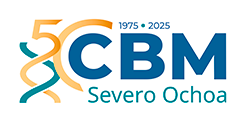Scientific Program
Interactions with the environment
RESEARCH GROUP
Immunoregulatory mechanisms in the development of Chagas disease: translational applications

Núria Gironès Pujol
To understand the role of immunoregulatory and immunopathogenic mechanisms in Chagas disease, a chronic cardiomyopathy caused by T. cruzi, we analyzed gene expression during infection, incorporating new Omic techniques. The importance of our studies lies in the need to identify new, more effective treatments and prognostic biomarkers for this neglected disease that affects 7 million people worldwide.

Research
Chagas disease caused by Trypanosoma cruzi affects approximately 7 million people in Latin America. Furthermore, blood transfusion and organ transplantation are health problems in countries receiving migrants from endemic areas. Cardiac pathology is the most serious and characteristic manifestation and a future incidence of between 6,000 and 30,000 cases of Chagas cardiomyopathy is estimated in Spain. Chagas disease is a neglected tropical disease for which there is no effective treatment for the chronic phase of the disease or reliable prognostic markers. Our research aims to understand how immunopathology is generated focusing on the immunoregulatory mechanisms mediated by myeloid suppressor cells (MDSCs). MDSCs are immature myeloid cells that expand in tumor processes, trauma, and infections. They are characterized by the expression of inducible nitric oxide synthase (iNOS) and arginase 1 (ARG1) that use the substrate L-arginine for the production of inflammatory mediators such as nitric oxide (NO) with antimicrobial effect, and with proliferative and tissue repairing effects, respectively. In this context, we have observed that infection by the parasite causes the expansion of MDSCs and a drastic reduction in the levels of L-arginine, which inhibits the proliferation of T cells and RNS, including nitric oxide (NO) produced by the iNOS. Supplementation with L-arginine in infected mice produced a decrease in mortality and an improvement in the clinical score of the mice and could be used in combination therapy.
Related to the above, the immune receptor SLAMF1, a regulator of the production of reactive oxygen species (ROS) by NADPH oxidase 2 (NOX2), inhibits the production of ROS in a manner dependent on the parasite strain, so the inhibition of the interaction of SLAMF1 with it could be the basis of a new therapy. To do this we use “Omic” tools such as Genomics, Transcriptomics, Proteomics, and Metabolomics, these studies have led us to identify which pathways are important in the immune response against the parasite, as well as the role of microRNAs as biomarkers and in the regulation of gene expression in the host cell.
Our interest in the translational application of our research leads us to maintain scientific collaborations with Spanish and foreign groups, basic and clinical, to identify new therapeutic targets and new prognostic biomarkers necessary for treating and monitoring patients.
Group members

Nuria Gironés Pujol
Lab.: 226 Ext.: 4593/4735
ngirones(at)cbm.csic.es

Diana Karolina Santos Peñaloza
Lab.: 226 Ext.: 4735
Selected publications

Discovery of circulating miRNAs as biomarkers of chronic Chagas heart disease via a small RNA-Seq approach
Silvina R. Villar et al.

Myeloid-Derived Suppressor Cells in Trypanosoma cruzi Infection
Manuel Fresno et al.

The Complete Mitochondrial DNA of Trypanosoma cruzi: Maxicircles and Minicircles
Francisco Callejas-Hernández et al.

Interaction of Signaling Lymphocytic Activation Molecule Family 1 (SLAMF1) receptor with Trypanosoma cruzi is strain-dependent and affects NADPH oxidase expression and activity
Cristina Poveda et al.





